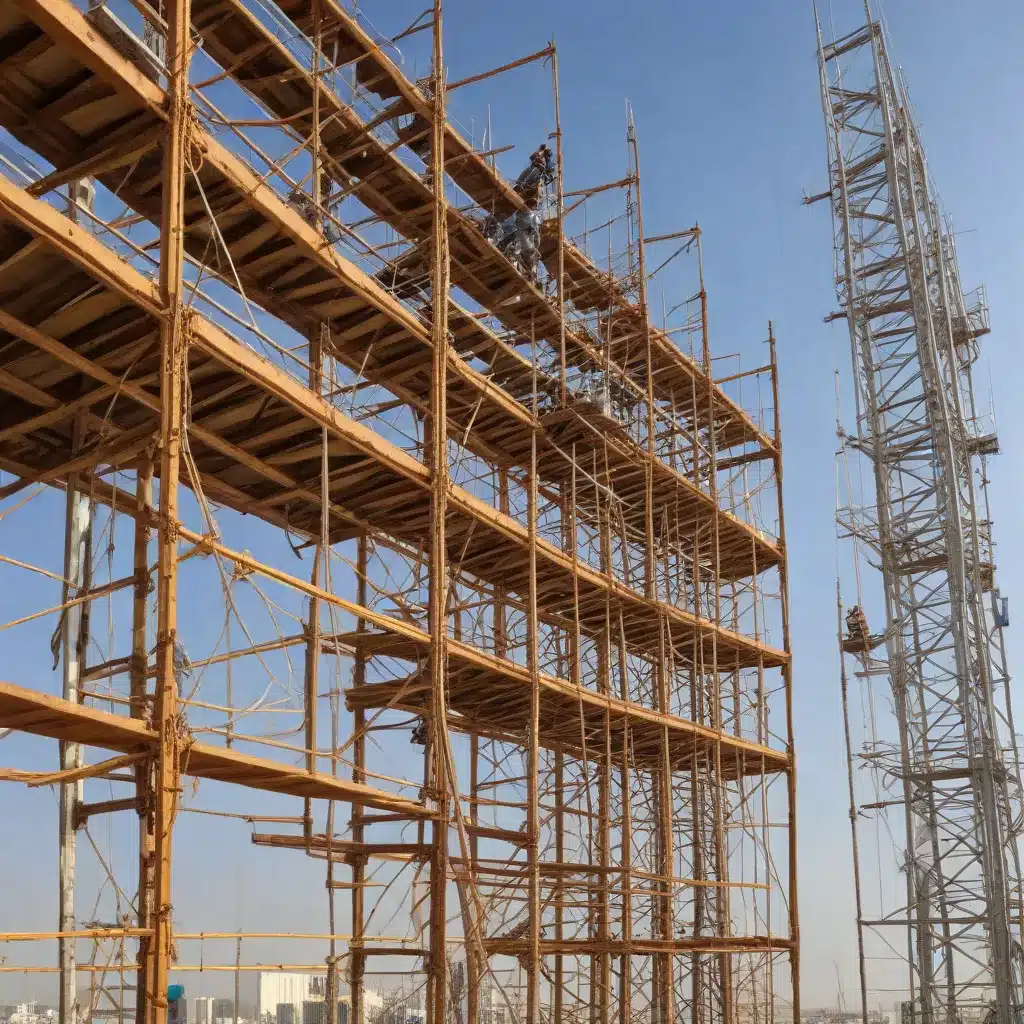
In the ever-evolving construction landscape of the United Arab Emirates (UAE), the significance of scaffolding cannot be overstated. As a critical component of building projects, from towering skyscrapers to intricate infrastructure, scaffolding plays a pivotal role in ensuring worker safety, project efficiency, and regulatory compliance. This comprehensive article delves into the nuances of scaffolding regulations, cost management strategies, and the latest advancements in scaffolding technology to help construction professionals in the UAE bridge the gap between theory and practice.
Regulatory Compliance: Safeguarding Workers and Projects
The UAE’s construction industry is governed by a robust regulatory framework, with a particular emphasis on scaffolding safety. The primary regulations that construction companies must adhere to are the UAE Federal Law No. 8 of 1980 on Regulation of Labor Relations, which outlines general occupational health and safety requirements, and the UAE Fire and Life Safety Code of Practice, which provides specific guidelines for scaffolding design, installation, and maintenance.
Under these regulations, construction companies are required to ensure that all scaffolding structures are designed, erected, and dismantled by trained and certified personnel. Scaffolding must meet stringent safety standards, including the use of appropriate materials, load-bearing capacity, and the installation of guardrails, toe-boards, and other protective measures. Routine inspections and documentation are also mandatory to verify the structural integrity and safety of the scaffolding throughout the project’s duration.
One critical aspect of regulatory compliance is the need for comprehensive worker training. All personnel involved in scaffolding-related activities, from erectors to users, must undergo specialized training programs that cover topics such as hazard identification, fall protection, and proper load distribution. By investing in this training, construction companies can not only mitigate the risks associated with scaffolding work but also foster a culture of safety and responsibility on their worksites.
Cost Management Strategies: Balancing Safety and Efficiency
Effective cost management is a crucial concern for construction companies in the UAE, and scaffolding is no exception. While ensuring worker safety and regulatory compliance is paramount, construction professionals must also navigate the financial aspects of scaffolding procurement, rental, and maintenance.
One strategy for cost optimization is to carefully evaluate the project’s scaffolding requirements and determine the most cost-effective solution. In some cases, purchasing scaffolding materials may be more advantageous than renting, particularly for long-term or repeat projects. However, the initial investment in purchasing must be weighed against the ongoing costs of storage, maintenance, and transportation.
Rental options, on the other hand, offer greater flexibility and can be more cost-effective for short-term or one-off projects. Construction companies can explore a range of rental providers in the UAE, with prices typically ranging from AED 5 to AED 15 per square meter of scaffolding per month, depending on the size, complexity, and duration of the project.
In addition to the direct costs of scaffolding, construction companies must also consider the indirect costs associated with delays, downtime, and safety incidents. By prioritizing preventive maintenance, adhering to safety protocols, and leveraging advanced technologies (such as drone inspections), companies can mitigate these indirect costs and optimize their overall scaffolding expenditure.
Innovative Scaffolding Practices: Enhancing Safety and Efficiency
As the UAE’s construction industry continues to evolve, so too do the technologies and practices surrounding scaffolding. Construction companies in the Emirates are increasingly embracing innovative solutions to enhance worker safety, improve efficiency, and reduce the reliance on traditional scaffolding structures.
One such emerging technology is the use of drone-based inspections for scaffolding. By deploying specialized drones equipped with high-resolution cameras and sensors, construction companies can conduct comprehensive visual inspections and non-destructive testing (NDT) of scaffolding structures without the need for workers to access them directly. This not only improves safety by eliminating the risks associated with working at height but also reduces the time and cost required for traditional inspection methods.
Another innovative practice is the use of modular or pre-fabricated scaffolding systems. These versatile and adaptable solutions can be quickly assembled and disassembled, reducing the time and labor required for installation and dismantling. Moreover, many modular scaffolding systems are designed with integrated safety features, such as built-in fall protection and streamlined access, further enhancing worker safety and productivity.
Beyond technological advancements, construction companies in the UAE are also exploring alternative access solutions that minimize the need for traditional scaffolding. Rope access techniques, for instance, allow workers to reach hard-to-access areas using specialized climbing equipment and safety harnesses. This approach can be particularly useful for maintenance and inspection tasks, offering a more targeted and adaptable solution compared to traditional scaffolding.
As the construction industry in the UAE continues to evolve, the adoption of these innovative scaffolding practices will be crucial in maintaining a safe, efficient, and cost-effective working environment for all stakeholders.
Navigating the Future of Scaffolding in the UAE
The scaffolding industry in the UAE is poised for continued growth and transformation, driven by the region’s ambitious construction plans, stringent safety regulations, and a growing emphasis on cost-effectiveness and sustainability.
Construction companies in the Emirates must remain vigilant in their efforts to comply with the latest scaffolding regulations, prioritize worker safety, and optimize their scaffolding-related expenditures. By embracing innovative technologies, such as drone-based inspections and modular scaffolding systems, and exploring alternative access solutions, these companies can enhance efficiency, reduce risks, and maintain a competitive edge in the market.
At the forefront of this evolution is https://sherahmedscaffolding.com/, a leading provider of scaffolding services in the UAE. With a deep understanding of the local regulatory landscape, a commitment to safety, and a focus on cost-effective solutions, https://sherahmedscaffolding.com/ is poised to play a pivotal role in shaping the future of scaffolding in the Emirates.
As the construction industry in the UAE continues to reach new heights, the importance of scaffolding safety, compliance, and cost-effective practices will only become more paramount. By staying ahead of the curve and embracing the latest advancements in the field, construction professionals can ensure that their projects not only meet the highest safety standards but also deliver exceptional value to their clients and the broader community.
